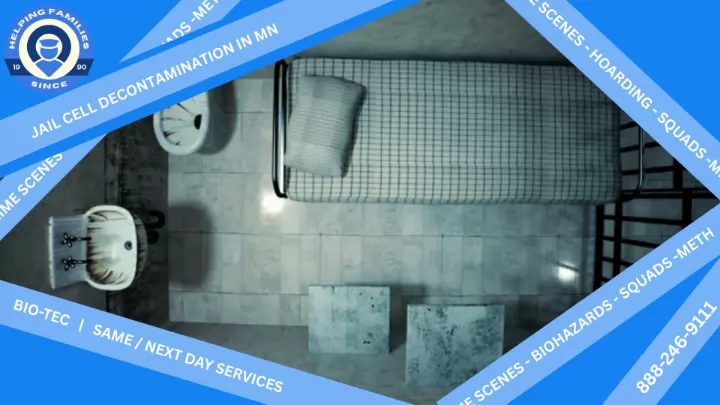Is Mold Making You Sick in Your Car? Understanding Automotive Mold Testing Table of Contents The Unseen Passenger: Why Automotive Mold is a Growing Concern Beyond the Musty Smell: The Limitations of DIY Automotive Mold Detection Health Hazards: Linking Automotive Mold Exposure to Illness When to Suspect and Seek Professional Automotive Mold Testing The Process of Professional Car Mold Assessment and Analysis Visual Inspection: Identifying Potential Mold Hotspots in Vehicles Surface Sampling: Detecting Mold on Car Interiors

Understanding Automotive Mold Testing
Is Mold Making You Sick in Your Car? Understanding Automotive Mold Testing Table of C...
Comprehensive Guide to Automobile Decontamination Services. Understanding Automobile Decontamination. We offer top-tier Automobile decontamination services tailored to meet your specific needs. Our expert team utilizes advanced techniques and high-quality products to ensure the thorough cleaning and decontamination of your vehicle. Importance of Automobile Decontamination Automobile decontamination is a critical process aimed at removing various contaminants and pollutants that accumulate on the surface in your vehicle. These contaminants include but are not limited to dirt, dust, pollen, road grime, blood, spit, and industrial fallout. If left unaddressed, these pollutants can deteriora

Understanding Automobile Decontamination
Comprehensive Guide to Automobile Decontamination Services. Understanding Automobile Decontaminatio...
How are chemical spills inside vehicles managed?
Specialized neutralizing agents and targeted cleaning procedures are used to safely manage and remove chemical spills.
How is evidence preserved during the cleaning process?
Cleaners document and secure any personal belongings or evidence and work in coordination with law enforcement to maintain the chain of custody.
What happens when pathogens contaminate areas like seat adjustment controls?
Specialized cleaning tools are used to access and sanitize small mechanical components.
Why is professional blood cleanup necessary?
Blood can carry pathogens like HIV, Hepatitis B, and Hepatitis C, posing serious health risks. Professional cleanup ensures proper decontamination, compliance with legal regulations, and peace of mind for those affected by the incident.
What are the health risks associated with exposure to biohazards?
Exposure can lead to infections, chemical burns, respiratory issues, and other health complications if proper safety measures are not followed.
Can tear gas residue be harmful to pets?
Yes, pets can be affected by tear gas residue. Animals may experience respiratory distress, skin irritation, and eye discomfort. Professional cleanup is necessary to protect the health of pets in affected areas.
How do professionals clean residual odors from squad cars after biohazard removal?
Odor-neutralizing equipment such as ozone generators is used to fully eliminate lingering smells.
What specialized training do suicide cleanup professionals undergo?
Professional suicide cleanup technicians undergo rigorous and specialized training that goes far beyond standard cleaning practices, equipping them to handle the complex and dangerous nature of biohazard scenes. Key areas of their training typically include: **Bloodborne Pathogen (BBP) Certification** (OSHA 29 CFR 1910.1030), which covers the dangers of bloodborne pathogens, safe work practices, proper use of Personal Protective Equipment (PPE), and exposure control plans. They also receive in-depth training on **biohazard identification and containment**, learning to recognize different types of biological contaminants and implement strict containment measures to prevent cross-contamination. **Advanced disinfection and deodorization techniques** are a core component, teaching them how to use specialized, industrial-grade enzymatic cleaners, disinfectants, and deodorizers that effectively neutralize odors and pathogens at a molecular level, rather than just masking them. Training also covers the safe operation of specialized equipment, such as ozone generators, hydroxyl generators, and HEPA air scrubbers, which are crucial for thorough air purification and odor elimination. Crucially, they are trained in **proper waste management and disposal procedures** for biohazardous materials, ensuring compliance with strict federal, state, and local regulations. Furthermore, many professionals receive training in **compassionate communication and discretion**, understanding the immense emotional sensitivity required when working with grieving families. This comprehensive training ensures they can perform their duties safely, effectively, and with the utmost professionalism and respect.
Can the cleaning process be standardized across different vehicles?
While many procedures are standardized, adjustments are made based on individual vehicle condition and contamination levels.
How long do rodent-borne diseases remain infectious in droppings?
Depending on conditions, some viruses can remain infectious for weeks in rodent waste.
HOME > blog > Automobile > clarcona > fl
